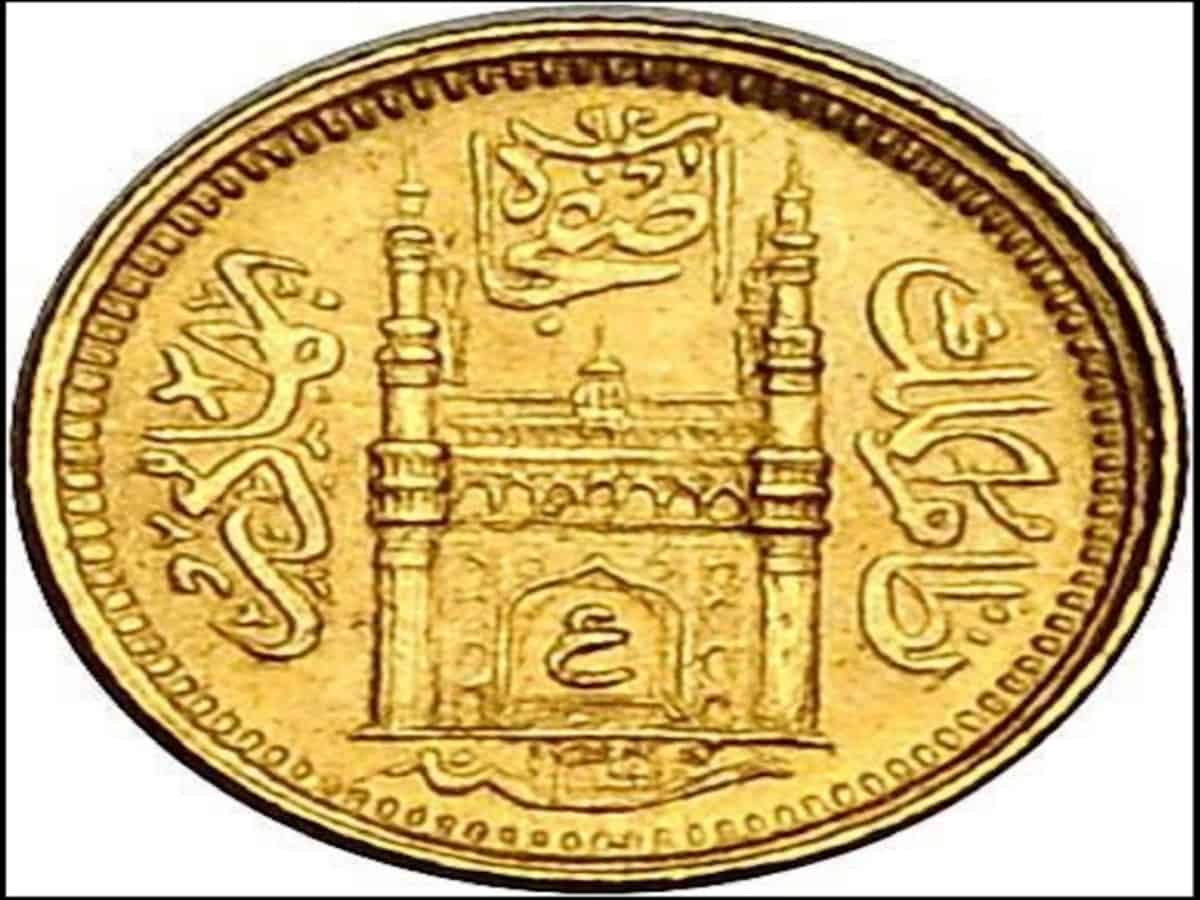

By Ahmed Shareef Askander
Many kingdoms in the Middle-East, Central Asia and South Asia, Safavid Dynasty of Persia (Iran), Mamluks of Baghdad, Egypt &and Syria, HOTAKI Dynasty Pashtuns of Afghanissued gold coins in various sizes, weights anddenomination popularly known as “ASHRAFI” in Persian – اشرفی.
Sher Shah Suri of the Suri Dynasty of India introduced Mohur- a gold coin weighing 169 grains (10.95 grams). The issuance of Mohur by Sher Shah Suri was a turning point in the history of Muslim dynasties, following which the Muslim dynasties started issuing Ashrafis in their own name in medieval India. It is worth mentioning that a Mohur is a gold coin that was formerly minted by the Mughal Empire, the Princely States of India including British Empire in India, Kingdom of Afghanistan, and Nepal. A Mohur was usually equivalent in value to fifteen silver rupees and two Mohurs were equivalent to 1 full Ashrafi.
During the reign of HH Mahboob Ali KhanNizam VI and HEH Mir Osman Ali Khan Nizam VII of AsafJahi Dynasty of Hyderabad& Berar, Ashrafis were minted in the denomination of 1 full Ashrafi (Ek Ashrafi), Half Ashrafi (NisfAshrafi), Quarter Ashrafi (RubaAshrafi), one-eighthAshrafi (ThumunAshrafi). Ashrafis were in three designs: (1) The Handmade, (2) Charkhi (Machine made) and (3) Charminar design. During the reign of HH Nawab Mir Mahboob Ali Khan Bahadur, Ashrafis were coined in all three designs, one after another, but in the reign of HEH Mir Osman Ali Khan Bahadur only the Char Minar design was struck.In the handmade design — a tiny gold coin, one-eighteenth Ashrafi was also coined. Contrary to the belief that Ashrafis were only struck during the reigns of HH Mir Mahboob Ali Siddiqui Khan Bahadur and HEH Mir Osman Ali Siddiqui Khan Bahadur, P B Chenoy, the Former MintMaster of Hyderabad Deccan in 1917 acquired handmade Ashrafi coined during the reign of Nawab Nasser UdDowla Bahadur.
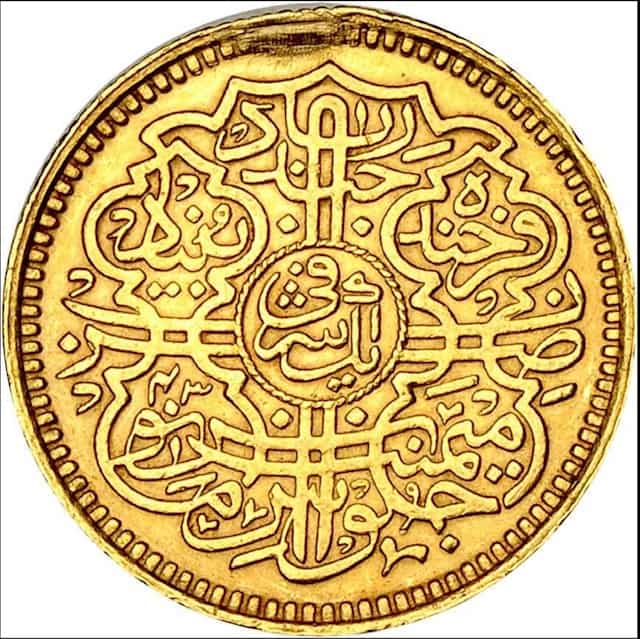
Recently, I was intrigued on learning about the existence of a copper Ashrafi of HH Nizam VI Mir Mahboob Ali Khan’s era, which was offered for sale in an auction. Contrary to the popular belief that Ashrafis are only and only always made of gold, after my research and consultation with numismatic experts and historians, I learnt, confirm and share with the readers here today the existence of copper Ashrafispecimen or pattern from the Nizam’s era. It is worth mentioning that none of the Ashrafis, either it be of gold, silver or copper were legal tenders. Ashrafis or gold coins were used only for ceremonial and ornamental purposes and also presented as gifts (Nazrana) to the Nizams, whilst the copper and probably silver Ashrafis were struck as specimen or pattern.
Historical literature from Nizam’s era, documents the use of Ashrafis for “Bagaar” (tempering) during the preparation of “Hyderabadi Khatti Dal” by the Chefs of Asaf Jahi Nizams, says Dr. Ahmed Mohiuddin Siddiqui, a Senior Journalist and Political Analyst with a huge interest in history and heritage,who recollects having heard about this recipe from my late beloved father Mr. Yousuf Askander, who in turn had heard it from his grandfather who was a decorated officer in the British-Indian Army.Dr. Ahmed Siddiqui had heard a similar story from his own father too due to the direct access of Nawab Kazim Yar Jung to HEH the Nizam VII by virtue of working in the King’s Personal Secretariat (Peshi) and by being a direct witness to culinary preparations for HEH the Nizam VII. Nawab Kazim Yar Jung was a close relative of Dr. Ahmed Mohiuddin Siddiqui’s paternal grandmother whose father was in the Peshi of the Nizam VII before Kazim Pasha (later titled as Kazim Yar Jung). The gold Ashrafis were used for tempering as gold and royalty go together. Gold is also considered to be an aphrodisiac. No wonder the number of children produced by HEH the Nizam VII is a testimony to the effective use of the gold Ashrafis in the royal Khatti Dal, observes Dr. Ahmed Siddiqui. Even to this day, gold and silver leaves are added to many Unani preparations for strength and vitality.
Numismatic enthusiasts and collectors of Nizam of Hyderabad numismatics showed huge interest following the appearance of this very rare piece of copper Ashrafispecimen / pattern.This copper Ashrafi of denomination 1/8 Ashrafi (ThumunAshrafi) is anAshrafispecimen or pattern, probably was meant for minting real Ashrafis of this value post approval by HH Mir Mahboob Ali Siddiqui Khan Bahadur, Nizam VI of Hyderabad. It is very tiny— just 11mm in size and resembles a black dot with milled edge to human eyes, almost 0.96 grams in weight and can easily rest on our index finger. But, on close observation with a magnifying glass or zooming with a high resolution camera lens, a clear and beautiful picture of the 1/8 Ashrafi (ThumunAshrafi) emerges from that small black dot.
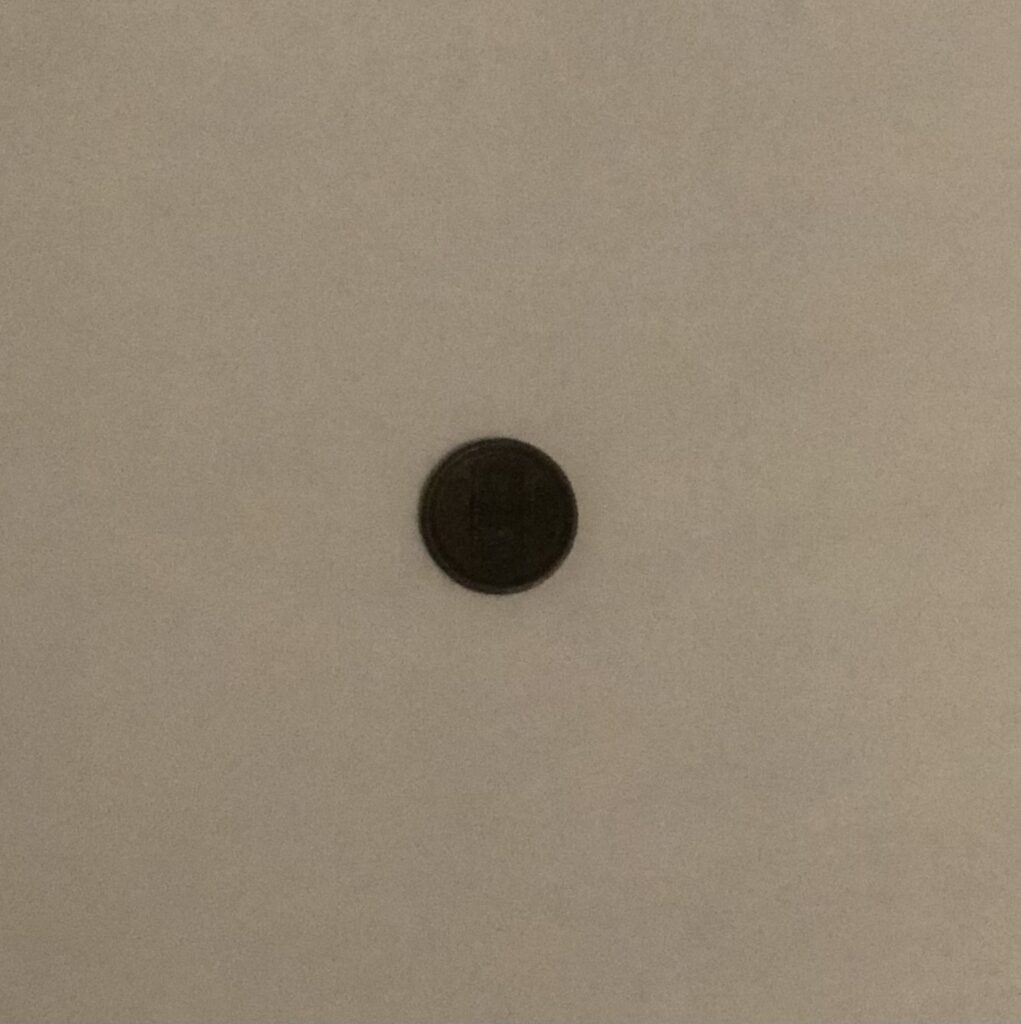
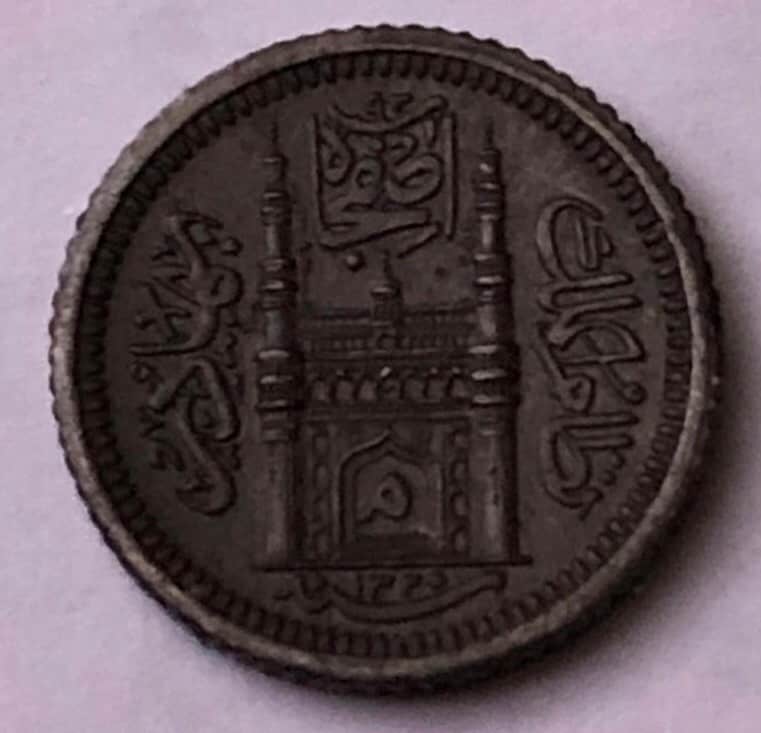
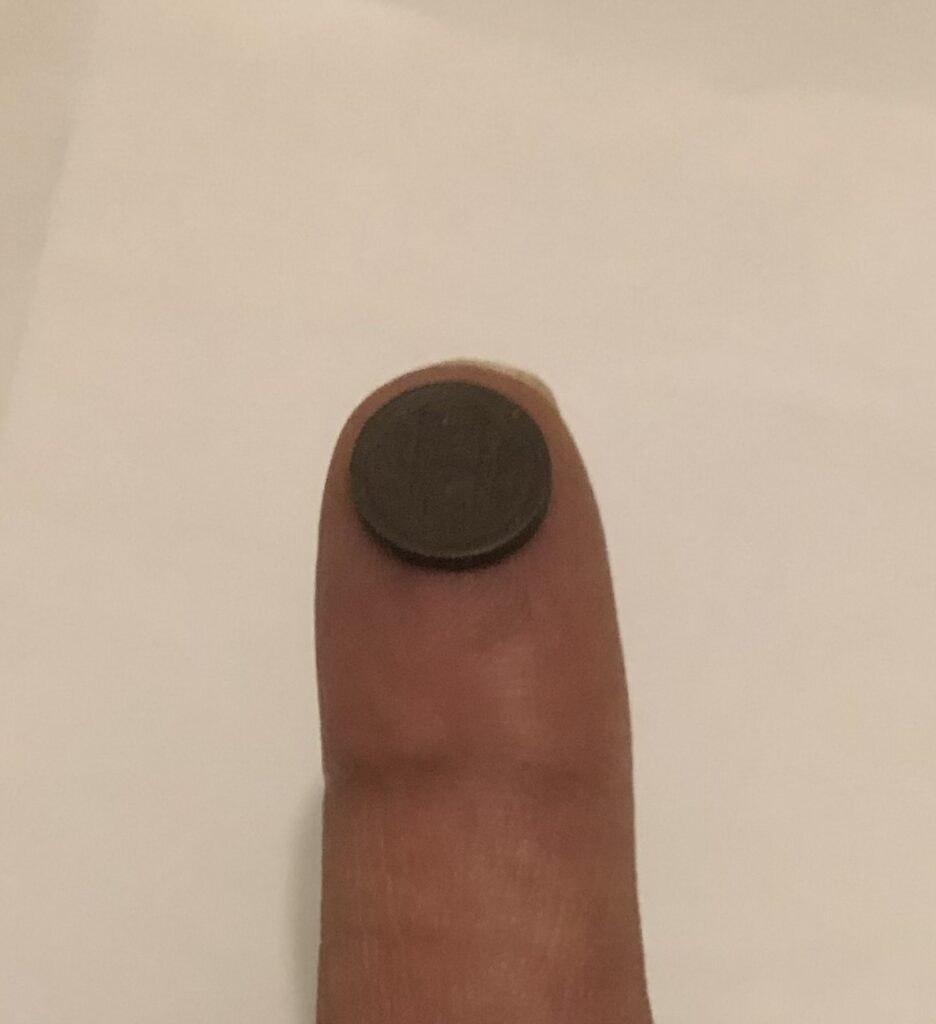
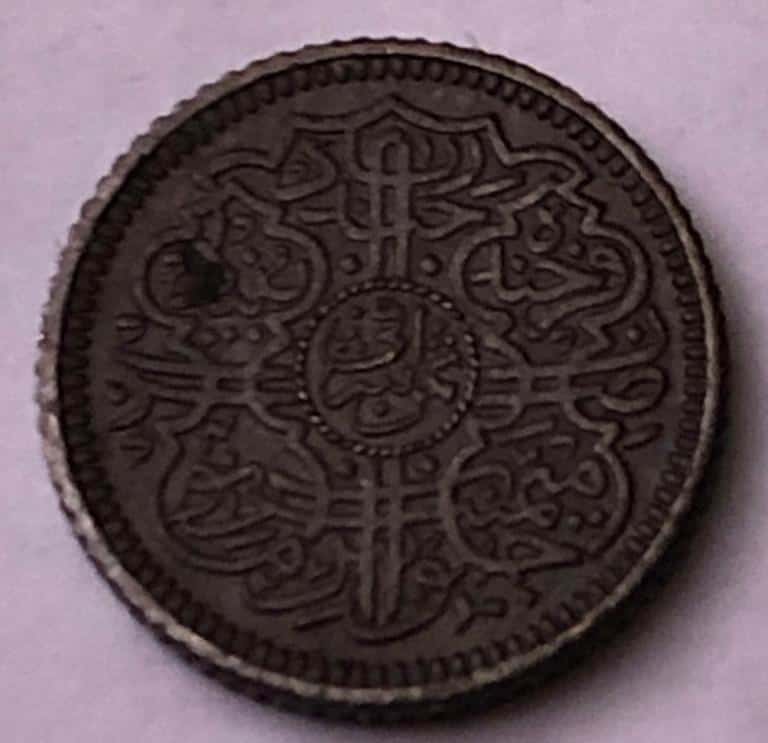
The obverse side of the Ashrafi is inscribed with the famous historical monument Charminarin the middle (Insignia of the Nizam’s) with the Persian/Arabicletter “مـ ” in its arch signifying HH Nizam VI Mir Mahboob Ali Siddiqui Khan Bahadur’s name, and on the right is “Nizam Ul Mulk” (The Regulator of the country), on the top is “AsafJah” (The Dynasty’s name) and a numeral “92”. It’s worth mentioning that the numeral “92” has a religious significance and represents the sum of the symbolic number of the letters in the Holy Prophet Mohammed’s name (Peace Be Upon Him) as per Abjad Numeral System or also called as Hisab Ul Jummal in Arabic.
i.e., “Meem” = 40
“Hey” = 08
“Meem” = 40
“Daal” = 04
————
92
————-
On the left it’s inscribed “Bahadur” (Valiant) and at the bottom is the year of its mintage in Hijri Year “Sanh 1320” experimental corresponding to the Gregorian year roughly1902 inscribed. It is worth mentioning that the dynastic titles of “Nizam Ul Mulk Asaf Jah Bahadur” were conferred upon the first Nizam by the Mughal Emperor Muhammad Shah in 1725 (1134F 1137H) and inherited subsequently by the later Nizams.
On the reverse side of the Ashrafi inscribed in the centre is the value of the Ashrafi “ThumunAshrafi” with a beautifulpattern around the coin’s circumference and in Persian calligraphy art it is inscribed “Julus MaimanatManoos 40 ZarabFarkhundaBunyaadHaidarabad” which reads as – Minted in Hyderabad of prosperous foundation to commemorate the auspicious accession year 40 to the throne.
In conclusion, this laborious research solved the mystery behind the copper Ashrafispecimen / pattern never seen before and deciphered the inscriptions on its obverse and reverse. The rarest of the rare copper Ashrafi pattern accidentally misplaced or lost decades ago by its English owner after he purchased it in 1980s and found recently lurking in the bottom of a stock box is back in the custody of a Hyderabadi again. Hurrah! A cheerful occasion for all Hyderabadis to celebrate its home coming!
Ahmed Shareef Askander is a researcher & heritage buff based in London, UK.

